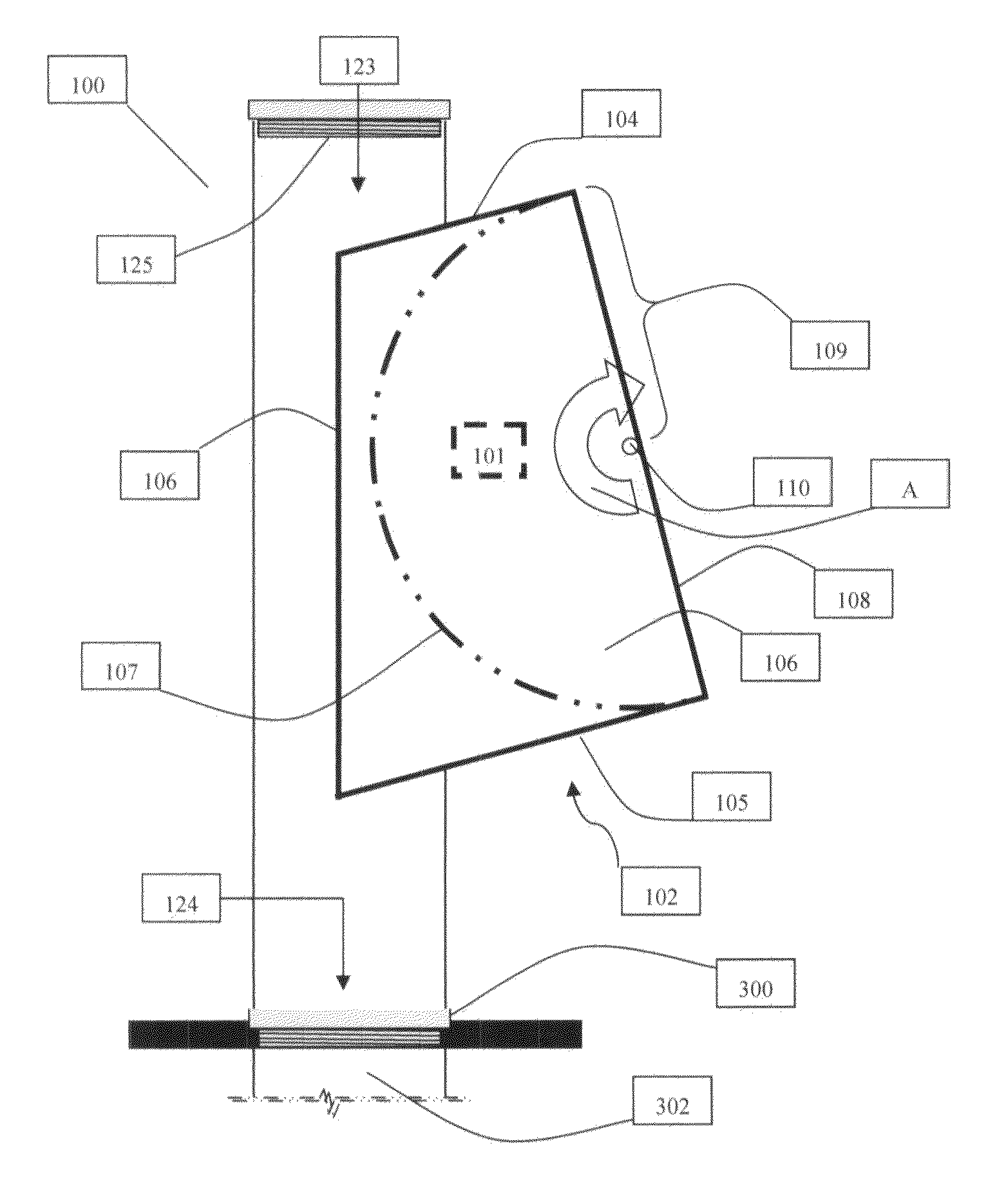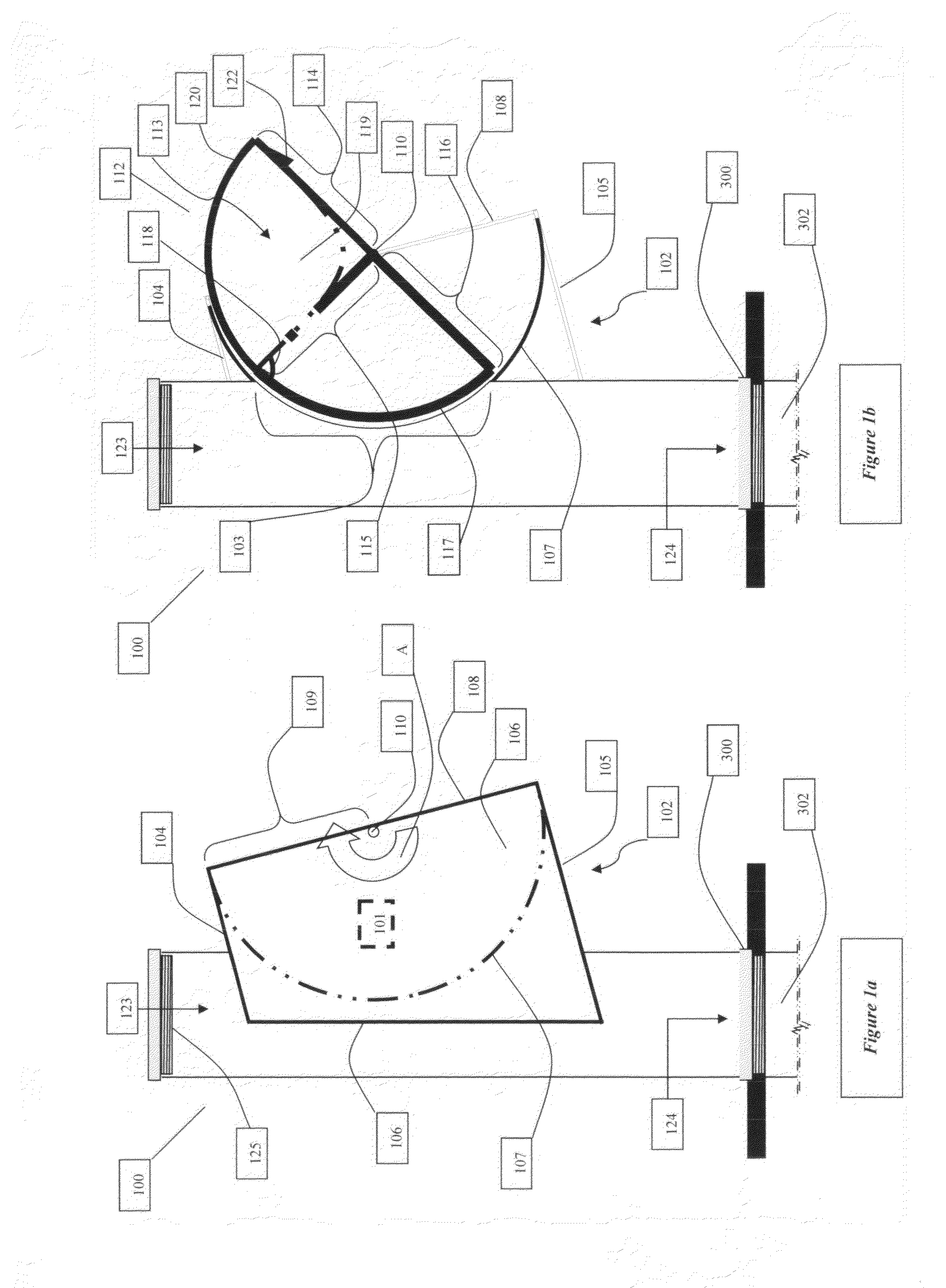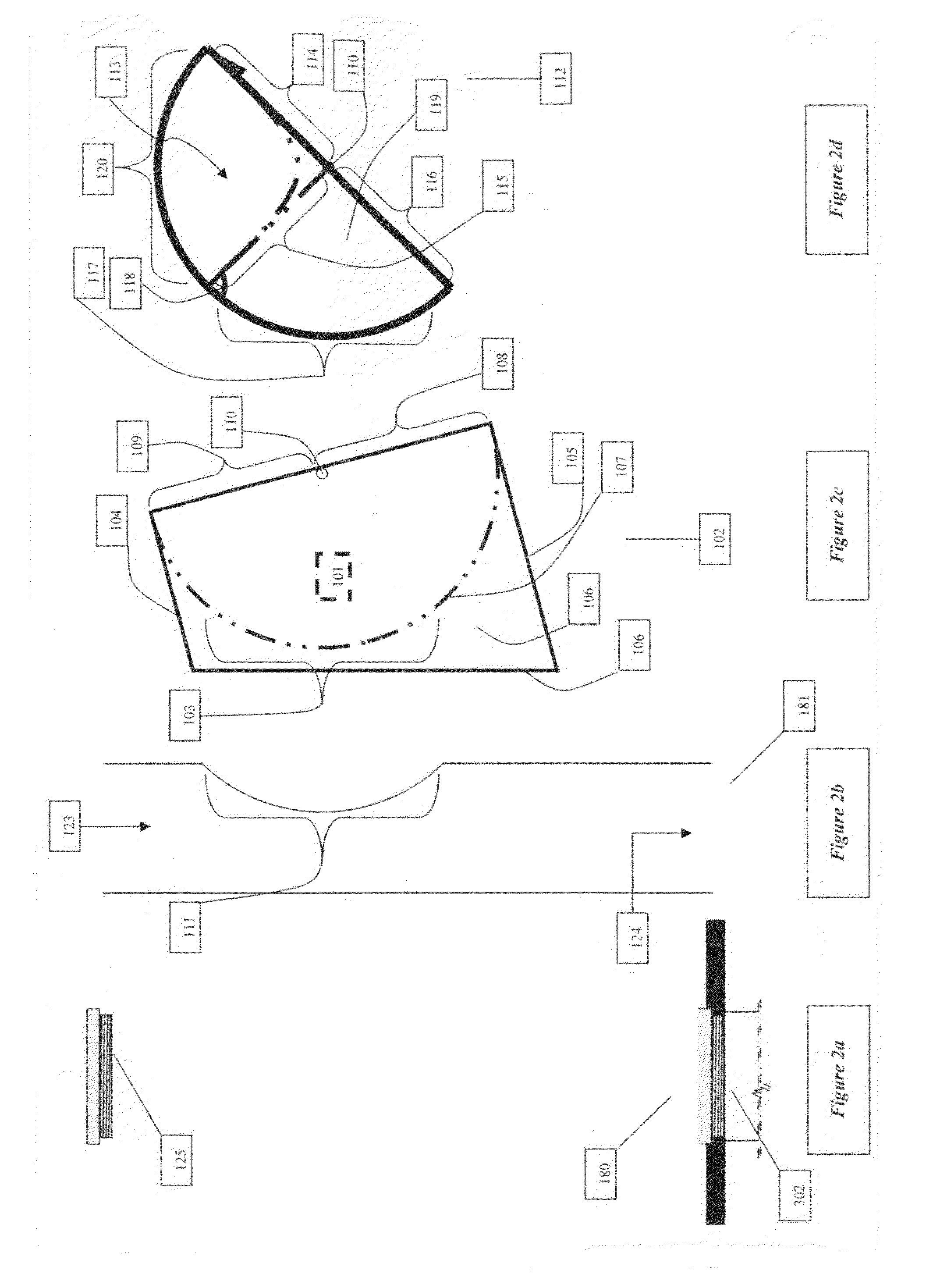There are numerous problems with these methods:
The problem with placing the
animal waste that has been collected within a domestic setting, using a ‘scooper’, or ‘grabber’ type device, then placed directly into a domestic refuse bin (see
list II for Patent References) is that the odour of the
animal waste will permeate throughout the domestic refuse bin causing an unpleasant odour in the region surrounding the domestic refuse bin.
If the animal waste has been gathered and contained using a ‘bagging’ type device (see
list I for Patent References) when the animal has been out on a walk or simply gathered from within a
domestic environment, if the bag is not made from a biodegradable material, it can increase the environmental cost and also the general financial cost of having to put the bin out for collection on a more frequent basis due to the increased build-up of animal waste and to the unpleasant permeating odours.
Furthermore, there are problems associated with flushing (see
list IV for Patent References) the disposable bags down domestic toilets as animal owners may not want to risk blocking their internal household plumbing network.
The problem with burying the animal waste or placing the animal waste in a biodegradable, or
decomposition system (see list II for Patent References) is that these solutions require an outdoor space which is not used for other purposes.
Furthermore, these solutions are
time consuming and more unpleasant, in particular, burying the animal waste on every occasion is very
time consuming and laboursome.
There may also be unpleasant odours associated with the use of biodegradable and
decomposition systems as it takes time for the animal waste to break down.
There is also a significant cost related to the installation, use, and up-keep of these private biodegradable and
decomposition systems.
The main problem with this is that almost all waste down pipes in American homes are internal, which suggests that this
system only provides a solution for domestics homes in countries such as the UK where external waste downpipes are commonplace.
On the off-chance that an external waste downpipe does exist, a further problem with this system is that the fitting requires a four inch
screw cap which is cumbersome to use as the opening is simply too small to allow most ‘scoopers’ or ‘grabber’ type devices to cleanly release the animal waste directly into the opening.
To do this is quite unhygienic.
Animal waste may also be burnt or incinerated (see list III for Patent References), but as these methods require an apparatus to incinerate the animal waste, the financial cost of these devices is high.
Furthermore, after
incineration, the ashes must still be disposed of in an appropriate manner, making the whole process costly and laboursome.
The problem with these methods is that directing the animal waste is awkward at best, and for the most part would realistically rely on the use of more basic apparatus; commonly the ‘scooper’, ‘grabber’, or ‘bagging’ type devices to complete the procedure.
Further problems would include that the animal has to be trained to excrete its' waste in a fairly precise designated spot which will take quite a lot of time, and for most
dog owners is unrealistic and far too
time consuming.
All of these products are cumbersome and complicated in design which increases their financial cost.
Therein lies the first problem, because the bin is not continually controlled, any type of rubbish may be deposited.
Further, there is a relatively high cost for commercial entities and local authorities to provide bins specifically for animal
waste disposal, and to dispose of the waste in an environmentally acceptable way.
Furthermore, each of the bins must be maintained by regular cleaning which is costly and time consuming.
As a consequence, the financial burden of installing and maintaining public animal
waste disposal bins has been found to be costly and time consuming.
As a consequence, the number of animal waste bins provided by local authorities is relatively low, and commercially is non-existent.
This is unsatisfactory as it is unpleasant for the animal owner to be carrying around the animal waste on their person for any period of time.
 Login to View More
Login to View More  Login to View More
Login to View More 


